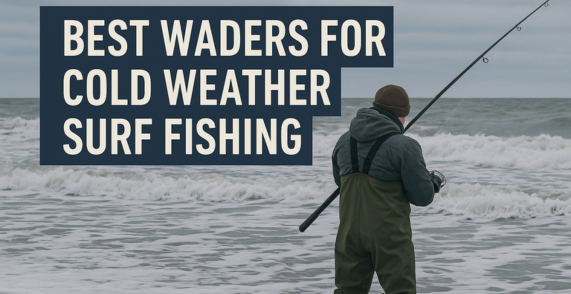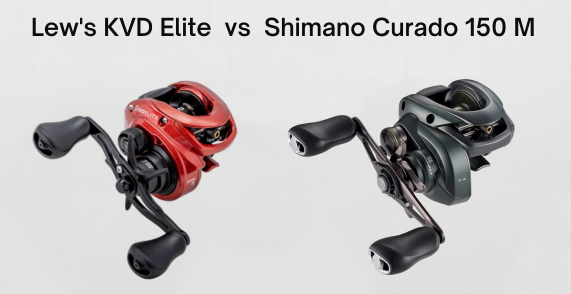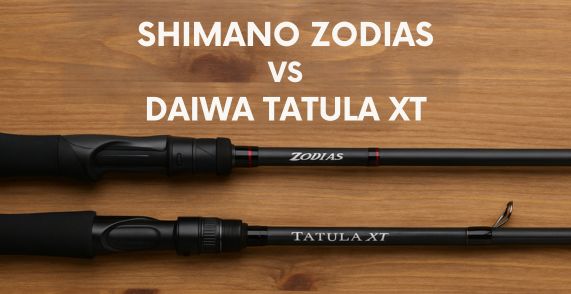In This Post
- 1 Key Takeaways
- 2 Why Your Wader Choice Makes or Breaks Cold Weather Surf Fishing
- 3 Material Matters: Choosing Between Neoprene and Breathable Waders
- 4 Critical Thickness: Finding Your Temperature Sweet Spot
- 5 Boot Design: Why Bootfoot Dominates Surf Fishing
- 6 Top Cold Weather Surf Fishing Waders Worth Your Money
- 7 Layering Strategies That Maximize Warmth
- 8 Extending Your Investment: Saltwater Wader Care
- 9 Make the Right Choice for Your Fishing Conditions
Key Takeaways
- Neoprene waders (4-5mm thickness) provide superior insulation for cold weather surf fishing compared to breathable alternatives
- Bootfoot designs prevent sand infiltration and offer better insulation, making them ideal for surf fishing
- Premium options like Simms G3 Bootfoot Waders provide exceptional cold-weather performance, while brands like Cabela’s offer quality at more accessible price points
- Proper layering underneath your waders can dramatically improve warmth retention during extended sessions
- Fishing Zenith recommends regular saltwater maintenance to extend your waders’ lifespan from the typical 5-7 years to much longer
Why Your Wader Choice Makes or Breaks Cold Weather Surf Fishing
Standing waist-deep in frigid surf while casting for stripers or redfish tests both your fishing skills and your gear’s capabilities. The wrong waders can cut your fishing trip short or worse—put you at risk for hypothermia.
Surf fishing creates unique challenges that inland fishing doesn’t. The constant wave action, salt exposure, and typically colder water temperatures demand specialized equipment. Fishing Zenith’s experts highlight that proper waders are perhaps the most critical investment for the serious cold-weather surf angler.
Material Matters: Choosing Between Neoprene and Breathable Waders
Neoprene: The Cold Water Champion
Neoprene waders stand out in cold weather surf fishing environments for several compelling reasons:
- Superior Insulation: The closed-cell foam construction traps body heat effectively even in frigid conditions
- Excellent Durability: More resistant to punctures and abrasions from rocks and shells
- Natural Buoyancy: Provides safety benefits if you step into unexpected deep water
- Consistent Warmth: Maintains insulating properties even when compressed
While neoprene can become uncomfortably warm during activity or in milder conditions, this downside becomes a benefit when facing winter surf conditions.
Breathable Options: When and How They Work
Breathable waders (typically GORE-TEX or proprietary materials) excel in versatility but have limitations in extreme cold:
- Require Substantial Layering: Need comprehensive insulation layers underneath
- Less Inherent Warmth: The material itself provides minimal insulation
- Better Mobility: Lighter and less restrictive than neoprene
- Temperature Regulation: Prevents overheating during active fishing
Breathable waders can work for cold surf fishing but require careful attention to your layering system. They’re best suited for anglers who fish through multiple seasons or who generate significant body heat while fishing.
Critical Thickness: Finding Your Temperature Sweet Spot
3mm vs. 4mm vs. 5mm: Temperature-Based Selection
The thickness of your neoprene waders directly correlates with their insulating capacity, making this decision critical for cold weather comfort:
- 3mm Neoprene: Suitable for moderate conditions (50-65°F water temperatures). These provide adequate insulation without excessive bulk or overheating during active fishing.
- 4-4.5mm Neoprene: The sweet spot for most cold weather surf fishing (below 50°F). This thickness balances mobility with substantial insulation for extended sessions in cold water.
- 5mm Neoprene: Reserved for extreme cold conditions. These maximum-insulation waders sacrifice some mobility for superior warmth in the harshest environments.
When selecting thickness, consider not just water temperature but also air temperature, wind conditions, and your personal cold tolerance. Many experienced anglers own multiple pairs for different conditions throughout the season.
Boot Design: Why Bootfoot Dominates Surf Fishing
The bootfoot versus stockingfoot debate largely disappears for surf fishing. Bootfoot designs clearly dominate for several critical reasons:
- Sand Protection: The integrated boots prevent sand from infiltrating your footwear, avoiding the painful abrasion that can occur with stockingfoot models.
- Better Insulation: Bootfoot waders typically offer superior foot insulation, crucial when standing in cold water for extended periods.
- Easier Entry/Exit: No need to manage separate wading boots on shifting beach sand.
- Wave Resistance: The secure attachment prevents waves from pulling at your footwear.
The built-in boots also eliminate pressure points where separate wading boots might pinch against stockingfoot waders, improving overall comfort during long fishing sessions.
Top Cold Weather Surf Fishing Waders Worth Your Money
1. Premium Pick: Simms G3 Bootfoot Waders
For those seeking the absolute best cold weather performance, Simms G3 Bootfoot Waders represent the gold standard:
- Construction: Four-layer GORE-TEX construction for ultimate waterproofing while maintaining breathability
- Boot Design: Insulated boots with built-in insulation for exceptional warmth
- Durability: Reinforced knees and seat areas for extended lifespan
- Comfort Features: Anatomical fit with articulated knees for natural movement
- Price Range: $550-700
These premium waders deliver unmatched performance for the dedicated surf angler, with insulation technology that keeps you comfortable in the harshest conditions.
2. Mid-Range Value: Orvis Clearwater Bootfoot
The Orvis Clearwater represents an excellent middle ground between performance and price:
- Construction: Four-layer waterproof breathable nylon construction
- Insulation: Sufficient warmth for most cold conditions with proper layering
- Features: Adjustable suspenders, handwarmer pocket, and gravel guards
- Durability: Reinforced knee sections for extended life
- Price Range: $250-350
These waders provide 80% of the performance of premium options at roughly half the cost, making them ideal for serious anglers on a moderate budget.
3. Budget-Friendly: Cabela’s Classic Series II
For cold weather surf fishing that won’t break the bank, Cabela’s Classic Series II neoprene waders deliver exceptional value:
- Material: 3.5mm neoprene construction provides good insulation
- Boot Insulation: 200g Thinsulate insulation in the boots
- Features: Handwarmer pocket and reinforced knees
- Price Range: $150-200
These waders prove that effective cold weather protection doesn’t require spending top dollar, making them perfect for occasional surf anglers or those just getting started.
4. Alternative Options Worth Considering
Several other manufacturers offer solid choices for cold weather surf fishing:
- HISEA Neoprene Waders: These budget-friendly options feature reinforced knees, waterproof phone pockets, and insulated boots at a remarkably affordable price point.
- Frogg Toggs Neoprene Waders: Known for their durability-to-price ratio, these waders offer reliable performance for anglers on a tight budget.
- Compass 360 Deadfall: These waders provide 4mm neoprene protection with reinforced knees and shins at a mid-range price point.
When evaluating these alternatives, focus on neoprene thickness, boot insulation, and seam construction, as these factors most directly impact cold weather performance.
Layering Strategies That Maximize Warmth
No matter how good your waders are, proper layering underneath makes the difference between comfort and misery in cold conditions. Think of your layering system as a critical component of your cold weather gear, not an afterthought.
1. Base Layer Essentials
The foundation of your layering system works to manage moisture and provide the first level of insulation:
- Material Matters: Choose synthetic fabrics or merino wool that wick moisture away from skin. Avoid cotton at all costs—when wet, it loses all insulating properties.
- Fit Considerations: Base layers should be form-fitting but not restrictive. Snug fit improves moisture management and prevents bunching.
- Weight Options: Lightweight for mild conditions, midweight for typical cold days, heavyweight for extreme conditions.
High-quality thermal underwear specifically designed for cold-weather activities represents your best investment here.
2. Insulation Layer Selection
The middle layer provides your primary warmth retention:
- Fleece Options: Provides excellent warmth-to-weight ratio and continues insulating when damp.
- Synthetic Insulation: Materials like PrimaLoft offer exceptional warmth even in wet conditions.
- Down Alternatives: While excellent insulators, down products lose effectiveness when wet, making them less ideal for wader applications.
Look for insulation pieces with minimal bulk, particularly in the lower legs where they must fit comfortably inside your waders.
3. Specialized Warming Accessories
Don’t overlook these critical additions to your cold-weather layering strategy:
- Neoprene Socks: Wear these over your regular socks for additional foot insulation.
- Hand/Foot Warmers: Disposable or rechargeable warmers can be strategic lifesavers in extremely cold conditions.
- Insulated Hats: Since significant heat loss occurs through your head, a good insulated hat with ear protection is essential.
- Neck Gaiters: Protect your neck from cold wind and spray while providing additional core warmth.
Many experienced anglers bring extra base layers to change into if the first set gets wet from perspiration during active fishing.
Extending Your Investment: Saltwater Wader Care
Saltwater is notoriously harsh on fishing gear. Proper maintenance isn’t just about cleanliness—it directly impacts your waders’ lifespan and performance.
1. Immediate Post-Fishing Rinse
This step is non-negotiable after saltwater fishing:
- Thorough Freshwater Rinse: Remove all salt residue from both interior and exterior surfaces.
- Pay Special Attention: Focus on boots, seams, and other hard-to-reach areas where salt can accumulate.
- Timing Matters: Don’t wait until you get home—keep freshwater in your vehicle for an immediate rinse at the fishing site when possible.
Salt crystals accelerate material degradation and can permanently damage seams if left untreated.
2. Proper Drying Techniques
How you dry your waders significantly impacts their longevity:
- Inside-Out First: Turn waders inside-out initially to dry the interior surfaces.
- Avoid Direct Heat: Never use direct heat sources which can damage waterproof membranes and adhesives.
- Circulation is Key: Hang in a well-ventilated area away from direct sunlight.
- Complete Drying: Ensure waders are 100% dry before storage to prevent mold and mildew.
A wader hanger that maintains the natural shape helps prevent creasing and stress on seams.
3. Storage Best Practices
Proper storage preserves your investment between fishing trips:
- Hanging vs. Folding: Hang when possible using proper wader hangers that distribute weight evenly.
- Temperature Control: Store in a cool, dry location away from direct sunlight and extreme temperatures.
- Avoid Compression: Don’t stack heavy items on top of waders which can damage seams.
- Boot Shapers: Consider using boot shapers to maintain boot form and prevent cracking.
With proper care, neoprene waders can last 5-7 years of regular use, significantly longer than the 3-5 years typically expected from breathable alternatives.
Make the Right Choice for Your Fishing Conditions
Cold weather surf fishing demands specialized gear that balances insulation, durability, and functionality. Neoprene bootfoot waders in the 4-5mm thickness range represent the optimal choice for most cold-weather conditions, with specific models selected based on your budget and feature requirements.
Remember that no wader is completely immune to punctures or leaks. Carrying a small repair kit with aquaseal or neoprene cement can save a fishing trip when minor damage occurs.
By investing in quality waders appropriate for your conditions, implementing proper layering strategies, and maintaining your gear diligently, you’ll extend your fishing season and enjoy comfort during the prime cold-weather surf fishing months when many other anglers have retreated indoors.







